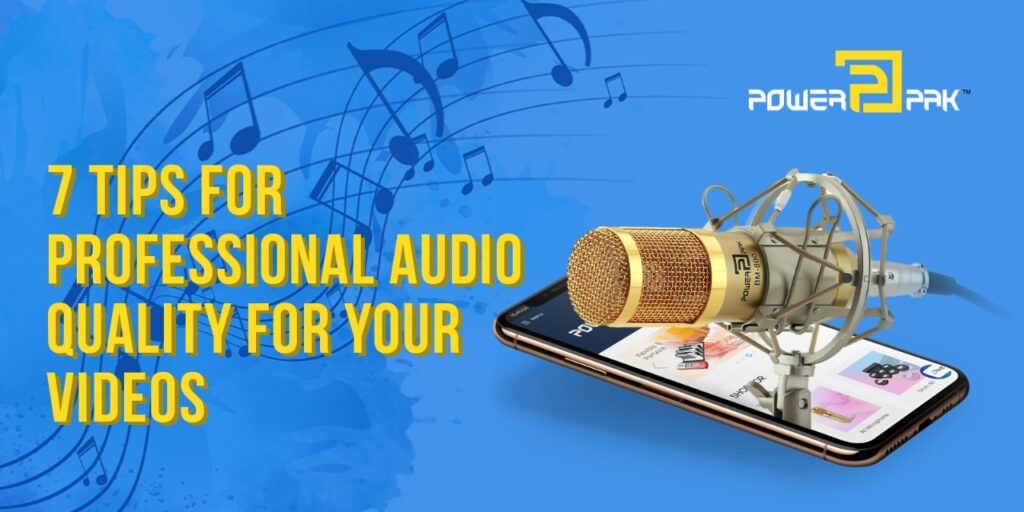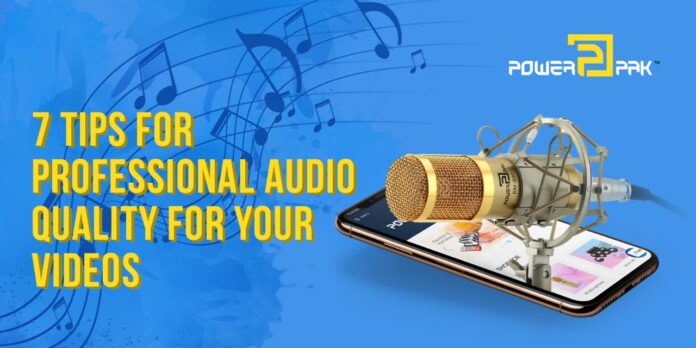Usually, when we watch videos, we think of them as a visual medium, but it’s the audio that we like to listen to. Excellent audio connects the viewers to the video and makes them stay for a longer time. Poor quality audio detaches viewers from the content you produce in visuals. In pre-recorded lectures, it’s always a barrier to access the audio, therefore it’s best to have perfect audio quality with high-end Musical Equipment for videos.
We are presuming that you are pre-recording a video lecture in a home office with a desktop or laptop, so our 7 tips are easily applicable to synchronous online lectures as well. To create a video lecture, you may use some tools like PowerPoint, MacVideo, or Echo360. These are quite useful, but the ability to edit audio is limited. If you want the best audio, consider a tool that has specially dedicated options like Camtasia. The more feature-rich tool will give you the ability to edit your audio and may have additional functions like noise cancelation or other filters to enhance your audio quality. Also, look for a tool allowing you to preview the volume in decibels.
7 Tips for improving the audio quality in your video recording –

1. Create a script –
Before starting up with the video recording, you need to have a content expert to give lectures at different places. You might know the content inside and outside. Even if you’re comfortable speaking without preparing notes, it’s better to avoid the urge to record and talk. You should have a proper script that will help you to be concise while recording the lectures.
2. Use simple and clear language –
When writing your script, try to keep the language simple and clear. Short words are easier to say and understand the listeners. Instead of using complex words, it may highlight the expertise, but sometimes it leaves confusion and ambiguity. You can try out saying more in fewer words. Avoid alliteration or words that are difficult to pronounce. Be sure that you are clear on how to pronounce unversed words before recordings.
3. Find the best quietest place to record audio –
Getting the best quality recording starts with reducing ambient and distracting noises. Find a secluded place that is free from noises like fans, people, traffic, open window, and so on. You can turn off your mobile phone and other electronic devices that produce notification noises to avoid any alert during the recording.
4. Listen to playback with headphones –
When listening back to the audio you’ve recorded, use the best headphones you have, preferably a good quality in-ear or over-the-ear model. It will be difficult to listen closely to what you’re hearing from your computer speakers. Using the headphones will help you hear the subtle sounds very clearly, which your viewers will listen to in your visual video.
5. Use an external microphone –
Most modern computers and laptops have decent microphones but aren’t intended to record audio. They are designed to capture a wide array of sounds. It means recording a lot of noises that you don’t want to capture. An external microphone can make a dramatic difference to the quality of your audio recording.
6. Place the microphone 4-6 from your face –
The closer your mic is, the more it will capture your voice and will sound better. One can control the input volume – or gain the loudness of the signals being recorded – through the distance from the mic. Recall from the mic. Most audio capture software applications will give you some indications of your gain. Before you start doing recordings, speak a few lines to test your microphone’s sensitivity to your range.
7. Use a pop filter –
There are certain consonant sounds like “P” or “S” can cause distortion when they are spoken into a microphone. Therefore, using a pop filter will help to diffuse the rush of air pressure and minimize the instance of plosives – popping noises from P, B, and F, sounds, and sibilance or hissing noises from S sound. One can get a pop filter or create your own with a pair of nylons and a wire coat hanger formed into a ring. Speak through the pop filter into the microphone.
Conclusion –
These amazing tips will make your recording sessions quite easy which will help you learn what to do and what not. Through practice, you will be able to make great videos and audio content. So, keep these tricks in mind for better audio quality for your video recording.

















